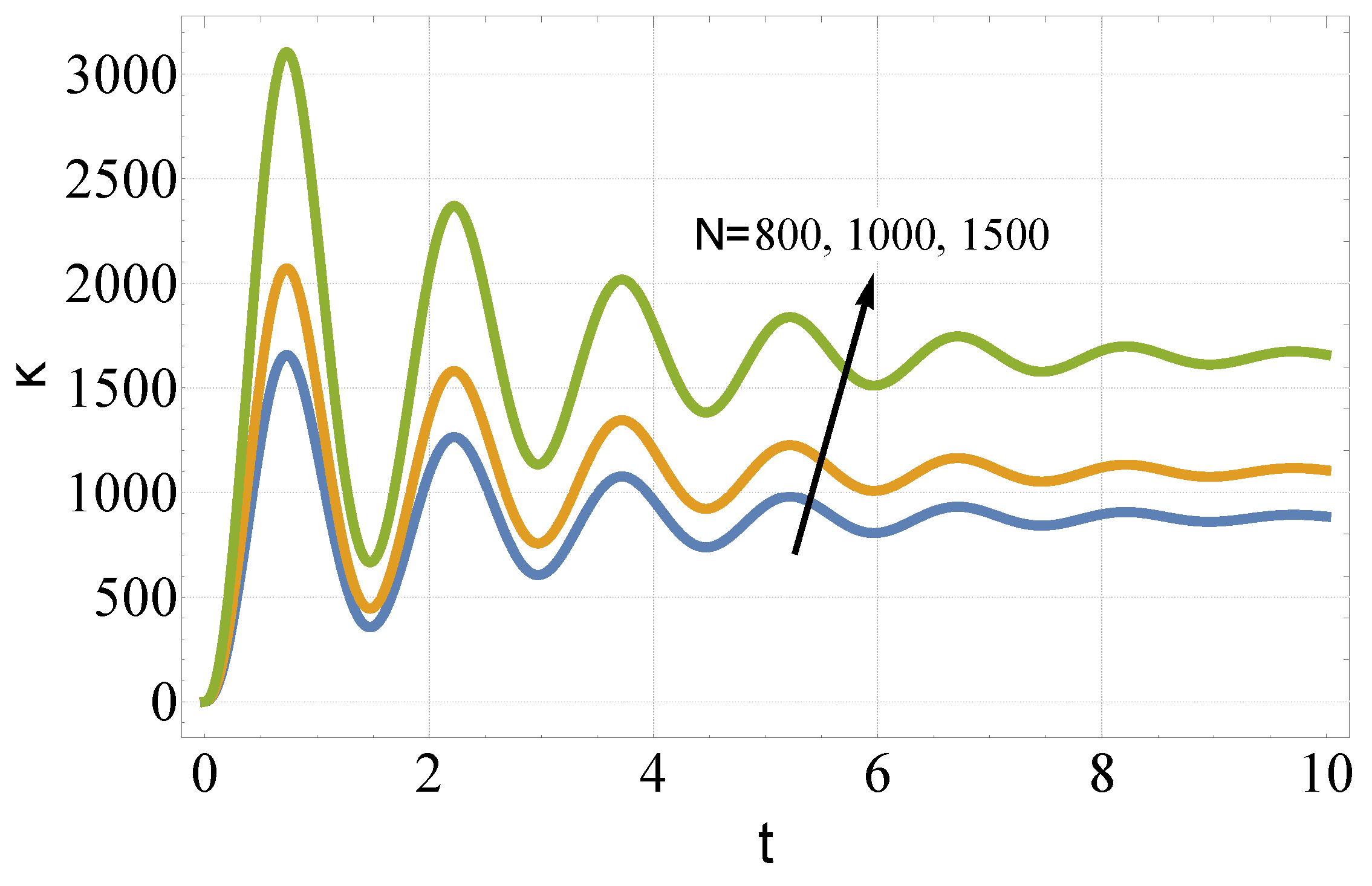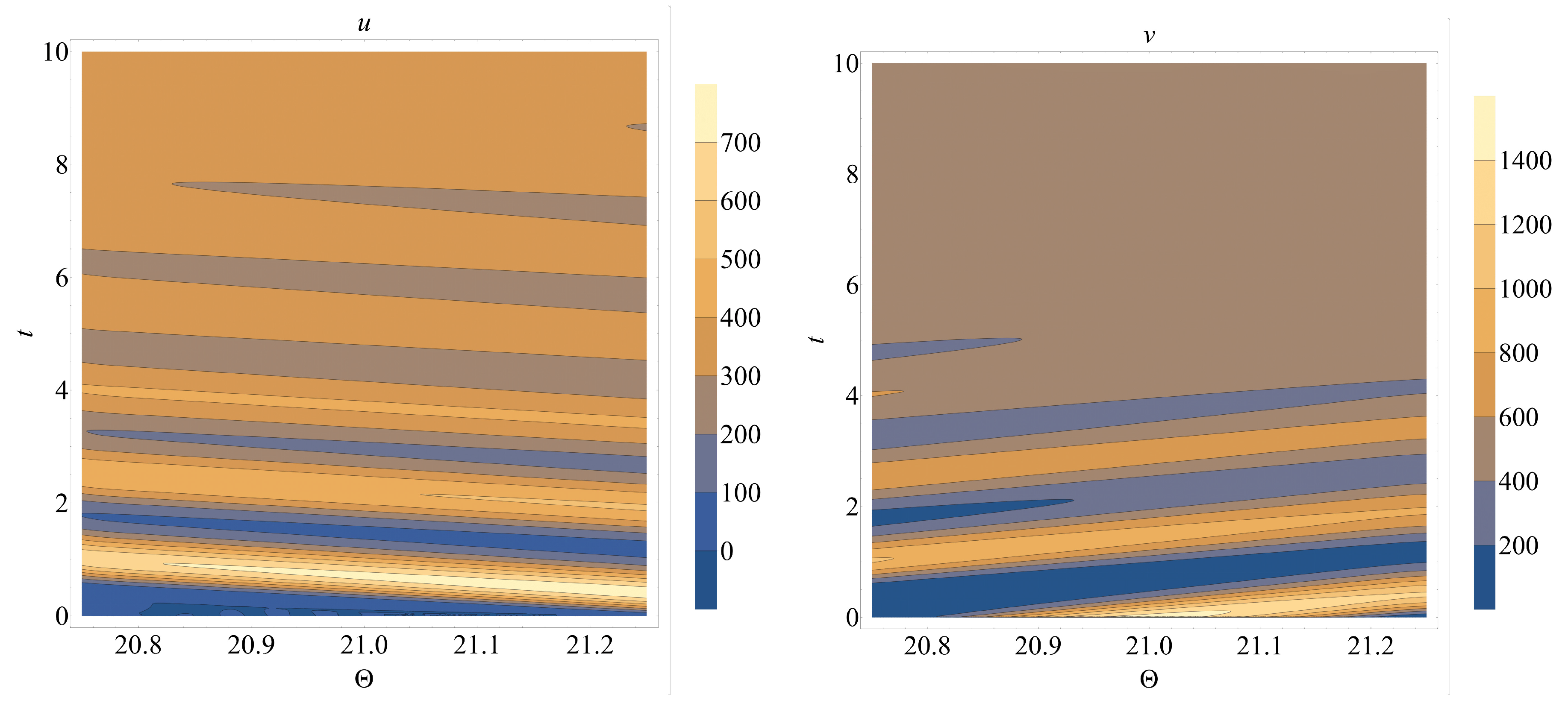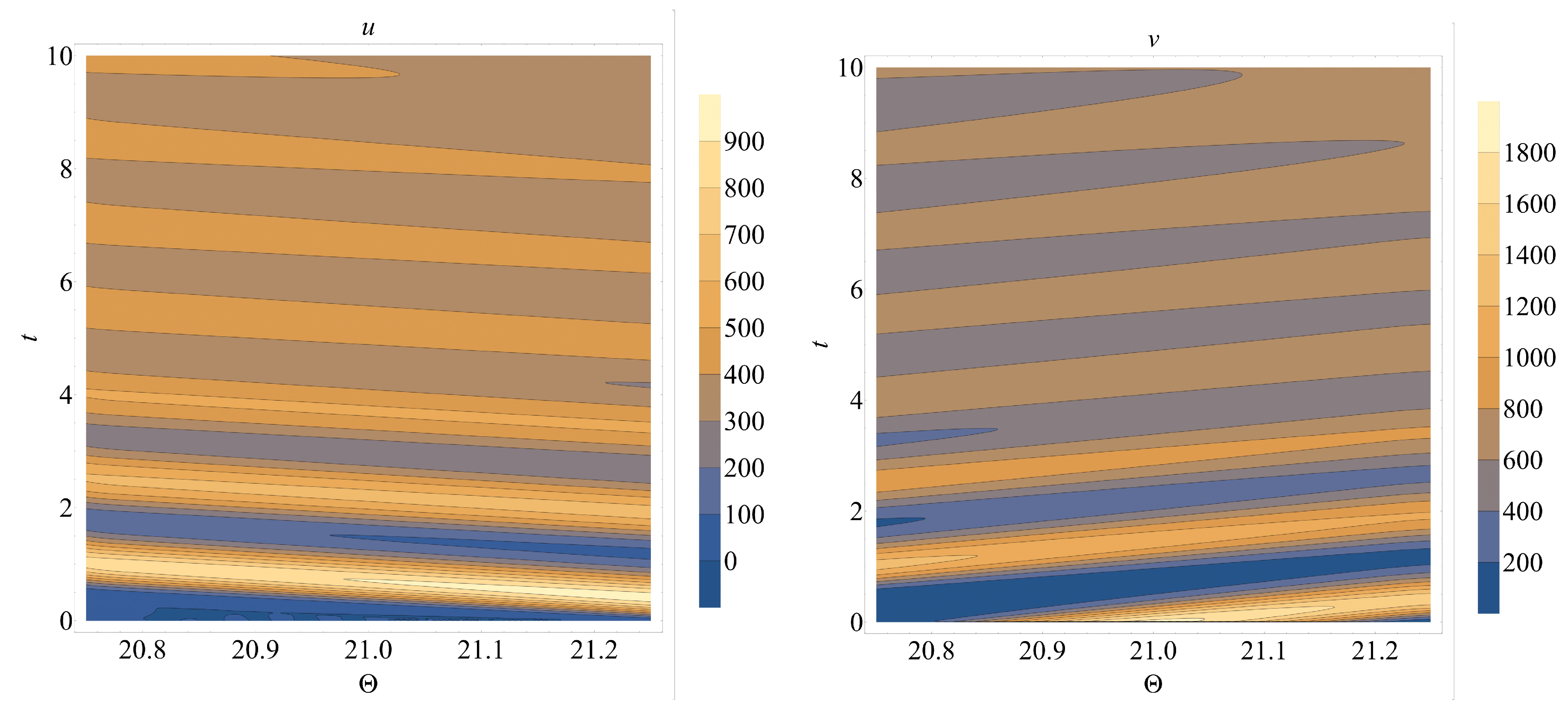1. Introduction
The usage of renewable energy sources is becoming more efficient as an alternative to power sources. Such advancement is exciting but performs significant challenges to the power industry. One of the main challenges is inherent variability in achieving significant penetration of renewable energy in modern power supply system [
1]. Hence, a necessity of efficient power supply strategies, as well as balancing schemes in presence of intermittent power source occurs. One of best solutions is the elaboration of programmable calculating devices and power control means. Usually, thermostatically controlled loads (TCLs) are the typical control means in such systems and it may be a better option to provide necessary generation-balancing services. Because it is feasible for loads to compensate for power imbalances more rapidly than thermal generators [
2]. By controlling aggregated TCLs, a promising opportunity can be obtained to mitigate the mismatch between power generation and demand, thus enabling renewable energy penetration and improving grid reliability [
3].
TCLs account for more than one-third of electricity consumption in the United States [
4]. Nowadays, the model of TCLs has gained extensive attention. Several methods have been used to model TCL populations. In [
5], multi-agent reinforcement learning was developed for modeling of TCLs. Model accuracy scales linearly with the number of agents and gives evidence for the increased agency to further sensing, domain knowledge or data gathering time. In [
6], multi-state operating reserve model of aggregate TCLs has been presented for power system short-term reliability evaluation. This analytical model for characterizing dynamics of the operating reserve is firstly developed based on the migration of TCLs’ room temperature inside temperature hysteresis band. A frequency control technique is used in the literature [
7] based on decision tree concept by conducting TCLs at smart grids. A new controlling action is introduced here to limit the probabilities of separating loaded feeders from smart grids due to maloperation of under-frequency load shedding relays. In [
8], authors propose a two-dimensional state-queuing modeling approach for the TCLs that increases the state vector to a two-dimensional state matrix. This method improves the accuracy of the state-queuing model by adding temperature-varying-rate information.
Loads are usually regulated by switches between on and off regimes, as it is the case for example air conditioners. Switches are used when the thermostat temperature approaches the minimal or maximal admissible values. Thus, large populations of TCLs can be manipulated by small deviations of set-point temperature without causing any considerable inconvenience to consumers. In particular, a common temperature setpoint offset needs to be manipulated for controlling the aggregate power requirement of a population of TCLs [
9]. This opportunity allows to develop efficient elaboration schemes aiming to reduce power consumption by altering the set-point temperature and the minimal and maximal admissible values of the temperature.
Currently, there exist multiple mathematical models allowing to describe the basic principle of TCL units. The simplest models are the hybrid ODE models that have been investigated in many previous works including [
9,
10,
11]. In general statement, the hybrid ODE model provides a relationship for the conditioned mass temperature,
as follows [
11]:
where
is the external temperature,
is the thermal capacitance (kWh/
C),
is the thermal resistance (
C/kW), and
(kW) is the cooling power supplied by the TCLs when switched on, the discrete function
represents the hardware
on/off state, and
w represents unpredictable heat gains or losses due to occupancy: all the above quantities with a subscript
i are for the
ith load.
Except differential Equation (
1),
is subject to a natural constraint
Here,
and
are the minimal and maximal admissible temperatures. Then, the set-point temperature of the
ith load,
, is determined in terms of
and
as follows:
On the other hand, introducing the width of the temperature band of the
ith load,
, we have
More sophisticated, but more realistic models are described by PDEs. Let the states
u and
v denote the density of TCL units per temperature
and time
t in the
on and
off states, respectively. Assume a homogeneous population of TCLs, i.e., assume that the parameters
,
,
,
, and
are equal for all TCLs omitting the subscript
i from the corresponding symbols. Then, the couple
satisfies the following system of first order PDEs [
3,
12]:
where
Remark 1. Despite the fact that system (4) is coupled via boundary conditions (5), (6), there exist various methods for exact and numerical determination of . At this, some important characteristics as numbers of loads in the
on and
off states and aggregate power consumption are evaluated in terms of
as follows:
where
k is the performance coefficient.
The quantities
and
are usually considered as control parameters in order to control the aggregate power consumption (
7). For a relevant study, see, e.g., [
4].
3. Control of the Diffusive PDE Model
In this section, we consider the problem of controlling the amount of the aggregate power consumption (
7) by choosing the quantities
and
accordingly. Such a problem for the simplest model described by (
4) has been considered, e.g., in [
4]. The problem is to choose appropriate values for
and
in order to ensure
with a desired accuracy
. Here,
is a given threshold value of admissible consumption,
T is the operation time of the TCLs. In other words, we choose
and
in such a way that the total power consumption during the operation interval
does not exceed a desired amount.
Remark 4. Even though we call ε an accuracy, it does not imply that it should be a small quantity. Indeed, as soon as , ε can not be smaller than the minimal possible value of κ in . On the other hand, when , meaningful values of .
Remark 5. Note that in the terminology of [14], this is an approximate controllability problem. Since the mathematical model is linear in
, for our purpose, we involve the Green’s function approach developed in [
14]. Substituting (
14) into (
15), we make the dependence
explicit.
Remark 6. It should be noted that depends on through the limits of integration, as well as through and . Thus, the minimization of is not that straightforward.
The main result of the paper can be stated in the following theorem.
Theorem 1. If for given , , T, and ε, there exist a bounded constant such thatuniformly for , , then From Theorem 1 it directly follows
Corollary 1. For approximate controllability of (8)–(11) it is sufficient that for given , , T, and ε, Remark 7. Depending on values of , (18) may not be satisfied by any values of with a given ε. See also Remark 4. In such cases, inequality (15) must be evaluated. Proof. When (
16) holds, then the estimate
is obtained immediately. Taking into account (
3) in (
15), we arrive at (
17). □
4. Simulations
In this section, we provide results of numerical simulation of the diffusive system above. Following to [
3], we choose the system parameters according to
Table 1. Involving the numerical scheme for computing the elements of the matrix of Green’s type
,
, developed in [
13], we compute
according to (
13). Then,
is computed using (
14).
Recalling Remark 3, note that in this case the solution of the diffusion model is linear in N.
Numerical evaluation of
,
shows that for the values of parameters represented in
Table 1, there always exists a constant
C such that (
16) holds. Therefore, Theorem 1 is valid and (
17) holds. Moreover, it has been observed that for these values, sufficient condition (
18) holds implying that the diffusive model above is approximate controllable.
Numerical analysis shows that for any fixed
t,
is a convex function of
with a unique global minimum. Moreover, for fixed
,
increases when
increases in
, and that for fixed
,
decreases when
increases in
. Therefore, the global minimum of
is achieved at
.
Figure 1 expresses the behavior of the minimal aggregate consumption against the number of TCLs when
. As it is expected,
increases with increase of
N. It is also seen from
Figure 1 that as time increases, the minimal aggregate consumption stabilizes around corresponding
.
Now let us examine the corresponding solution
. In the contour plots below (
Figure 2,
Figure 3 and
Figure 4), dark blue regions correspond to near-zero values and the lighter the color of the domain, the higher the corresponding value. For
, as
Figure 2 shows, for
, in the whole range of
,
u is in the dark blue region meaning that the density of TCLs in the on state is low. A similar region occurs near
. In between these regions,
u approaches its maximal value in the range of
. Then, the values of
u oscillate between lower and higher values until it is stabilized near
for
. A similar behavior is observed also for
v with the difference that
v is stabilized near
TCLs/
C much earlier, for
.
A similar behavior is observed also in the case of , but unlike the previous case, in this case, the stabilization of both u and v occurs much later. However, when , v is stabilized surprisingly fast, for .









